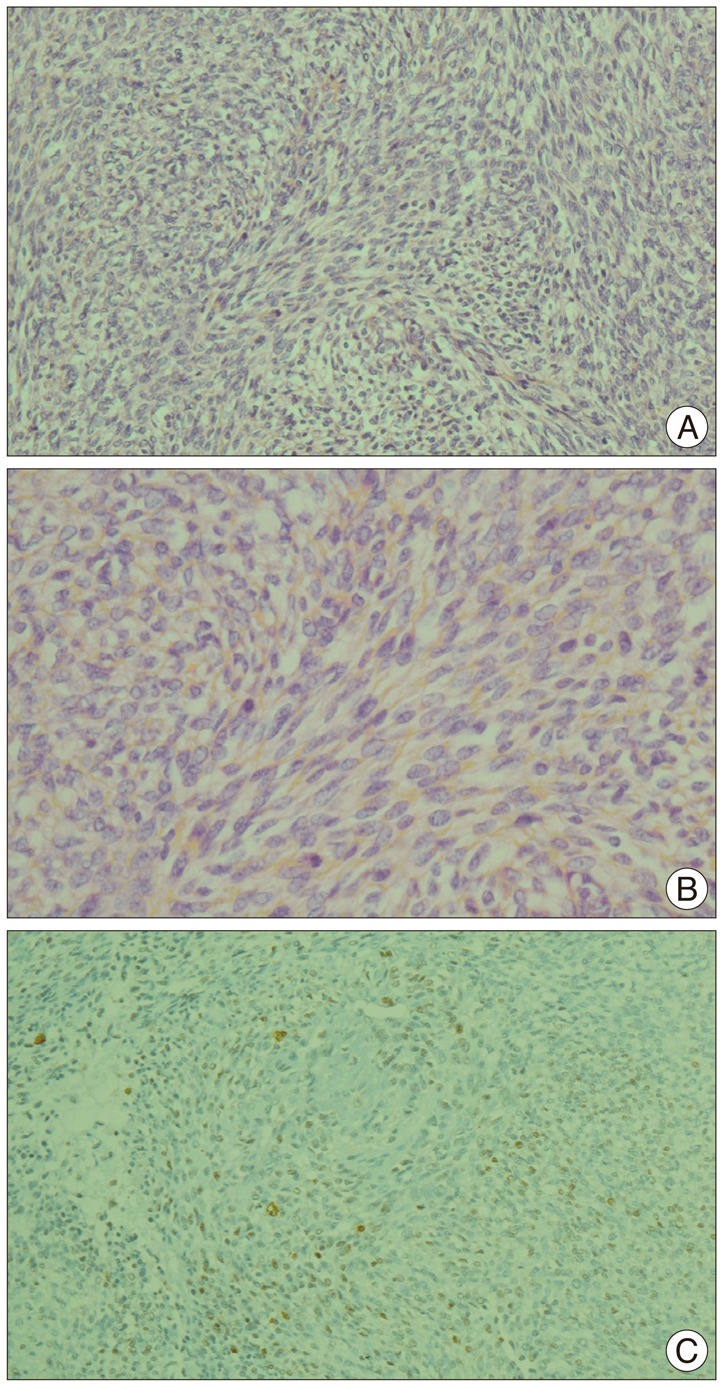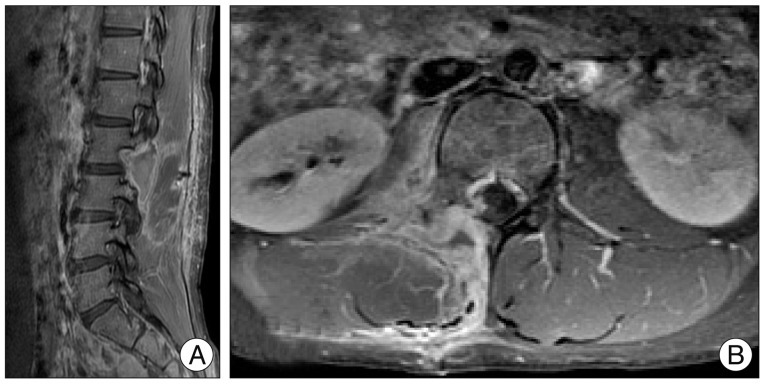1. Adamson DC, Cummings TJ, Friedman AH. Malignant peripheral nerve sheath tumor of the spine after radiation therapy for Hodgkin's lymphoma. Clin Neuropathol. 2004; 23:245–255. PMID:
15581029.
2. Amin A, Saifuddin A, Flanagan A, Patterson D, Lehovsky J. Radiotherapy-induced malignant peripheral nerve sheath tumor of the cauda equina. Spine (Phila Pa 1976). 2004; 29:E506–E509. PMID:
15507791.

3. Baehring JM, Betensky RA, Batchelor TT. Malignant peripheral nerve sheath tumor : the clinical spectrum and outcome of treatment. Neurology. 2003; 61:696–698. PMID:
12963767.
4. Baek WS, Pytel P, Undevia SD, Rubeiz H. Spinal cord metastasis of a non-neurofibromatosis type-1 malignant peripheral nerve sheath tumor : an unusual manifestation of a rare tumor. J Neurooncol. 2005; 74:183–185. PMID:
16193390.

5. Ducatman BS, Scheithauer BW, Piepgras DG, Reiman HM, Ilstrup DM. Malignant peripheral nerve sheath tumors. A clinicopathologic study of 120 cases. Cancer. 1986; 57:2006–2021. PMID:
3082508.

6. Ellison DA, Corredor-Buchmann J, Parham DM, Jackson RJ. Malignant triton tumor presenting as a rectal mass in an 11-month-old. Pediatr Dev Pathol. 2005; 8:235–239. PMID:
15827834.

7. Hruban RH, Shiu MH, Senie RT, Woodruff JM. Malignant peripheral nerve sheath tumors of the buttock and lower extremity. A study of 43 cases. Cancer. 1990; 66:1253–1265. PMID:
2119249.

8. Kim KT, Park YS, Kwon JT, Kim YB. Primary paraspinal malignant peripheral nerve sheath tumor. J Korean Neurosurg Soc. 2008; 44:91–94. PMID:
19096700.

9. Kinebuchi Y, Noguchi W, Igawa Y, Nishizawa O. Recurrent retroperitoneal malignant nerve sheath tumor associated with neurofibromatosis type 1 responding to carboplatin and etoposide combined chemotherapy. Int J Clin Oncol. 2005; 10:353–356. PMID:
16247664.

10. Kourea HP, Bilsky MH, Leung DH, Lewis JJ, Woodruff JM. Subdiaphragmatic and intrathoracic paraspinal malignant peripheral nerve sheath tumors : a clinicopathologic study of 25 patients and 26 tumors. Cancer. 1998; 82:2191–2203. PMID:
9610699.

11. Landy H, Feun L, Markoe A, Patchen S, Bruce J, Marcus J, et al. Extended remission of a recurrent median nerve malignant peripheral nerve sheath tumor after multimodal treatment. Case report. J Neurosurg. 2005; 103:760–763. PMID:
16266062.

12. Masui F, Yokoyama R, Soshi S, Beppu Y, Asanuma K, Fujii K. A malignant peripheral nerve-sheath tumour responding to chemotherapy. J Bone Joint Surg Br. 2004; 86:113–115. PMID:
14765877.

13. Weiss SW, Goldblum JR, Enzinger FM. Enzinger and Weiss's Soft Tissue Tumors. 2001. ed 4. St Louis: Mosby.
14. Wong WW, Hirose T, Scheithauer BW, Schild SE, Gunderson LL. Malignant peripheral nerve sheath tumor : analysis of treatment outcome. Int J Radiat Oncol Biol Phys. 1998; 42:351–360. PMID:
9788415.
15. Yang JC, Chang AE, Baker AR, Sindelar WF, Danforth DN, Topalian SL, et al. Randomized prospective study of the benefit of adjuvant radiation therapy in the treatment of soft tissue sarcomas of the extremity. J Clin Oncol. 1998; 16:197–203. PMID:
9440743.








 PDF
PDF ePub
ePub Citation
Citation Print
Print



 XML Download
XML Download